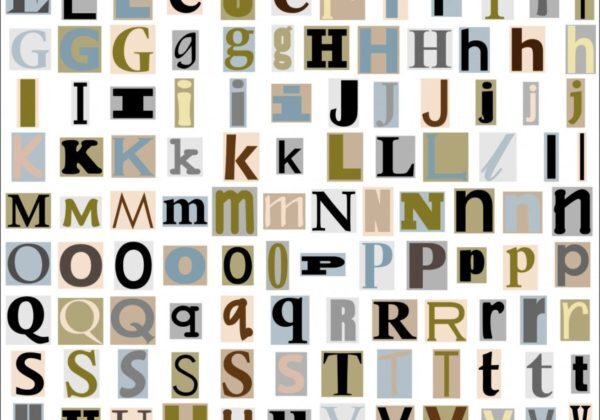Essentially, typography is the visual component of the written word. It is the technique, and art, of arranging letters in a way that makes the text legible, clear, and visually appealing to the reader. Typography involves the structure, size, weight, and style of the characters. It also considers the amount of space between the letters, characters, words, and lines. All of this comes together to influence certain emotions and convey specific messages to support the written letters and characters. When done well, it is incredibly powerful. When done poorly, there is a risk the message will be lost or misunderstood.
Before the digital age, typography was a specialized craft associated with books and other public works. Even before Gutenberg’s printing press, handwritten books or posters were carefully crafted, spacing was experimented with, and sometimes ornate embellished letters decorated the pages. It then evolved to include movable type tiles with the invention of the printing press, which massively expanded the art form. The creativity of typography then extended even further with the explosion of the digital age.
When it comes to branding, typography helps convey your message to your audience. Good typography will create a visual hierarchy, feel balanced, provide contrast, create consistency, inform structure, and set the tone of your product. The way the words and letters look and interact with each other is just as important as the meaning of the words. The typography choices you make can either help or harm your brand.

6 Reasons why a Strong Brand is Important for your Small Business
Building a strong brand is a critical component of any successful business. A well-crafted brand strategy not only helps businesses establish recognition and build trust with their customers, but also supports advertising efforts and inspires employees. Furthermore, strong branding can increase a business’s financial value and generate new business opportunities through word-of-mouth referrals. As the…

The Best Time of Day to Post on Social Media
When it comes to social media, gauging the right time or times to post is considered crucial to maximize post interactions. At Remixed, we specialize in social media marketing, and have studied the best times to post. But, it is imperative to note the data isn’t necessarily applicable for every type of audience. A few…

When Should You Utilize Digital Printing?
Digital printing is probably what most people are most familiar with, since you probably have one at home. Inkjet printers and laser printers are found in many homes, schools, and offices. Of course, these are generally consumer-level digital printers. For digital printing, images are sent directly to the printer using digital files, as opposed to…

Plan it, make it, stretch it, wrap it, ink it, spin it, long print run it : Flexographic
Flexographic printing is a form of direct relief printing that is characterized by the use of flexible printing plates. In the past, these printing plates were always made of rubber, whereas today, flexible photopolymer printing plates might also be used. These plates have a slightly raised image of the content on them, they’re inked, and…

Why It’s Important To Have A Brand Promise
In today’s fast-paced and ever-changing business landscape, it’s more important than ever for companies to establish a clear and compelling brand promise. A strong brand promise not only helps companies differentiate themselves from their competitors, but also sets expectations for customers and helps build trust and loyalty. According to Seth Godin, a marketing expert and…

The Future of Branding: How Technology is Shaping the Industry
Executive Summary As we move further into the digital age, technology continues to revolutionize the branding landscape. This white paper will examine the key technological developments shaping the future of branding and discuss how businesses can leverage these advancements to create stronger brand identities, enhance customer experiences, and maintain a competitive edge. Topics covered include…

6 Benefits of Choosing a Local Agency
When it comes to branding and marketing, choosing the right agency is crucial. While larger global agencies may seem like the obvious choice, working with a local agency can provide unique benefits that can make a big difference in the success of your branding efforts. In this article, we’ll explore six key reasons why working…

Typefaces & Fonts Do More Than Transmit Words
Do the typefaces and fonts you choose for your brand materials matter? As long as it’s in a language the audience understands, they’ll get the intended message, right? Wrong. Typefaces and fonts are essentially the shapes of the letters. Shapes are multi-sensory, meaning they affect more than one of your senses and can easily elicit…

